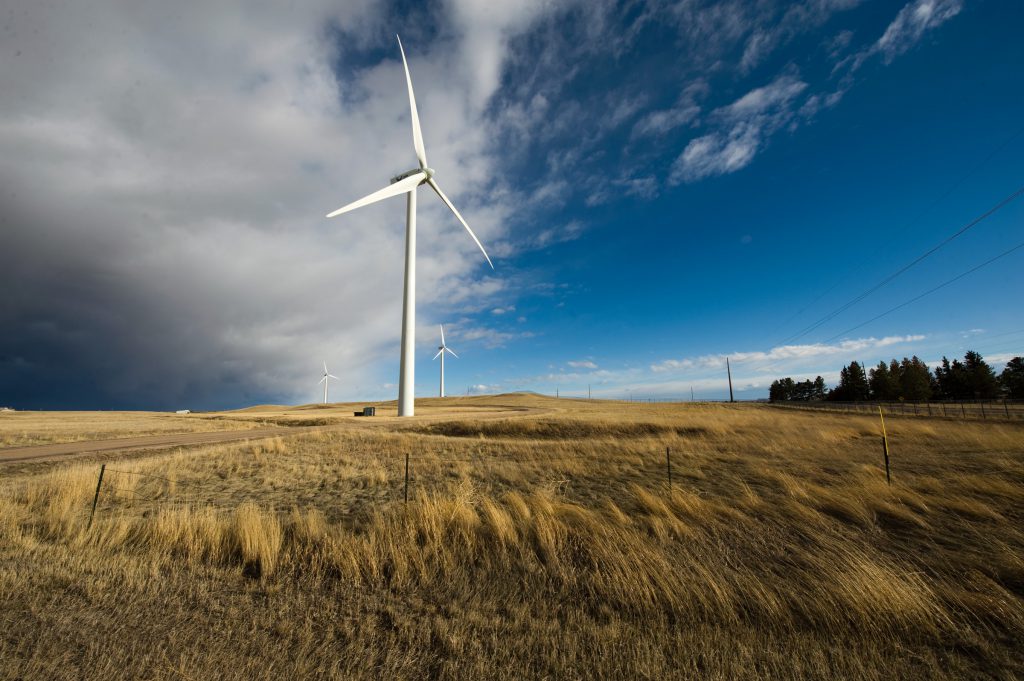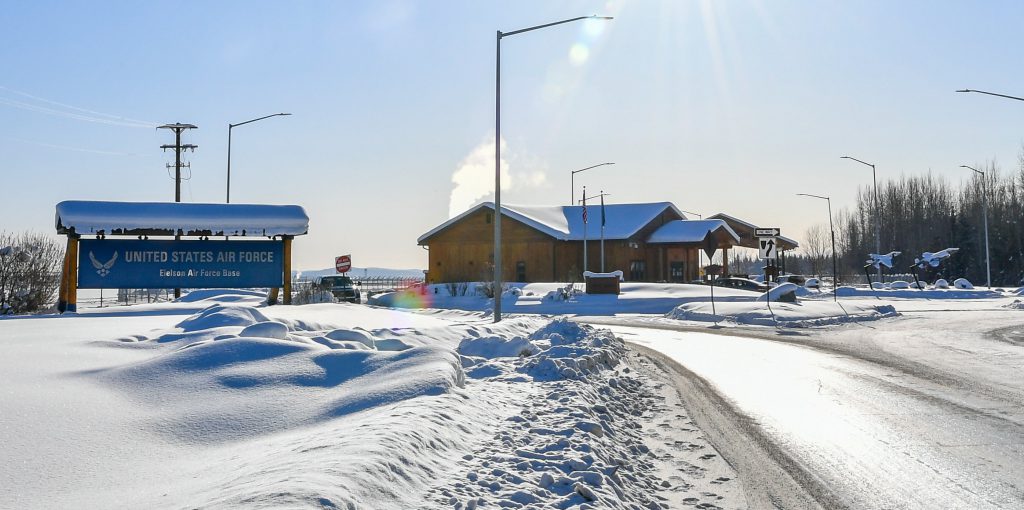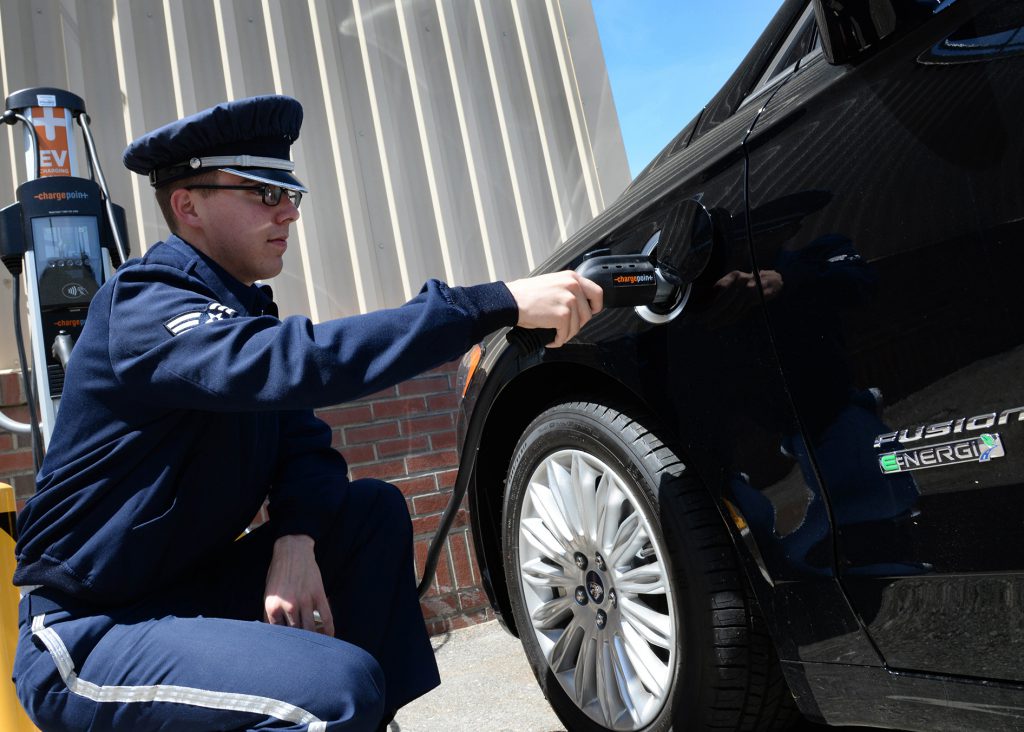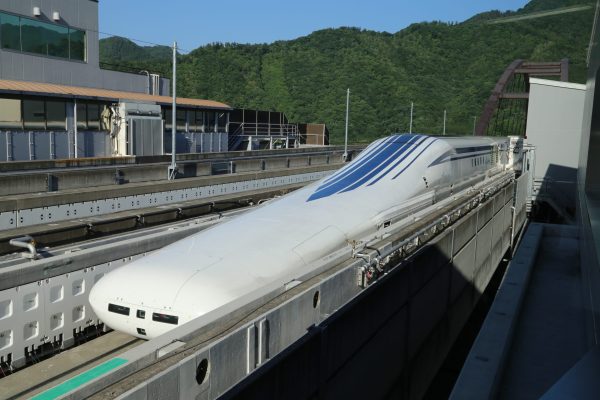By Nancy Balkus, P.E., SES
Climate change is reshaping an already increasingly complex global security environment. We must adapt and respond to that threat. Extreme weather and environmental conditions are imposing high costs on Department of the Air Force installations and missions while simultaneously posing new risks to our ability to train and operate effectively.
In response to these challenges, the Department of the Air Force is developing comprehensive new policies and investing in innovative solutions that maximize operational capability while also promoting cleaner, more efficient resource use. In October 2022, the Secretary of the Air Force released a Climate Action Plan, which defines how we will preserve operational capability, increase resiliency, and help mitigate climate impacts through specific and measurable objectives and key results. The Climate Action Plan’s three major priority areas are to maintain air and space dominance by making our installations more resilient; make climate informed decisions in every aspect of our operations; and optimize energy use and pursue alternative energy sources to save resources and reduce greenhouse gas emissions while also enhancing combat capability.
We have started implementing innovative solutions to meet these goals and bolster mission readiness. Current efforts include pilot initiatives to accomplish 100 percent carbon-pollution free electricity and 100 percent zero emission non-tactical vehicle acquisitions by FY2030 and FY2035, respectively. We also are exploring alternative energy opportunities through nuclear, geothermal, and solar energy means, and changing the department’s overall approach for future energy initiatives.

FLEET ELECTRIFICATION
With more than 60,000 vehicular assets across its installations, the Department of the Air Force sees fleet electrification as an opportunity to improve resiliency, decrease operation and maintenance costs, and reduce greenhouse gas emissions.
To support Executive Order 14008, Tackling the Climate Crisis at Home and Abroad, and Executive Order 14057, Catalyzing Clean Energy Industries and Jobs Through Federal Sustainability, we kicked off two projects in December 2021 (at Joint Base Andrews, Md., and Joint Base McGuire-Dix- Lakehurst, N.J.) to explore the complexities of electrification. To date, these have served to identify key considerations for electrical infrastructure and typical concentrations of government fleet vehicles, while additionally informing potential charging infrastructure configurations within large parking lots and dispersed individual charging stations. In 2022, we expanded the non-tactical vehicle electrification efforts to 16 additional installations to create a wider body of knowledge in anticipation of enterprise-wide implementation.
The Department of the Air Force also partnered with Defense Logistics Agency Energy to release a Request for Information to gather ideas on how to shape a novel “Charging-as-a-Service” model that balances contracting and fiscal restraints. Now working on this with the Defense Innovation Unit, we are demonstrating these concepts at Joint Base Anacostia-Bolling, D.C., in addition to Joint Base Andrews and Joint Base McGuire-Dix-Lakehurst as we continue to assess opportunities at pilot installations.
From an execution standpoint, we are prioritizing contractor-owned, contractor-operated models to minimize the infrastructure ownership risk to installations. This includes developing policy to ensure that the full spectrum of equities like the National Environmental Policy Act, cybersecurity, real property, and commodity reimbursements are protected. We are focused on deploying infrastructure first as we await the arrival of more than 700 zero-emission vehicles anticipated for a late FY2023 delivery.
The Department of the Air Force is incorporating lessons learned from different geographies, utility partners, acquisition pathways, mission types, and weather conditions into a comprehensive zero-emission vehicle planning guidance document and a catalog of acquisition pathways. This work will provide a step-by-step process for electrification and secure charging infrastructure.
Beyond vehicle electrification, we are working on a Department of Defense initiative to pilot new electricity procurement approaches for carbon pollution-free electricity. Locations include Seymour Johnson AFB, N.C.; Shaw AFB, S.C.; Dyess AFB, Texas, and the 147th and 149th Texas Air National Guard.
Additionally, the Department of the Air Force views micro-reactors as a promising alternative energy technology to ensure energy resilience and reliability across its installations (see sidebar). Micro-reactors are small nuclear reactors that produce carbon-free electricity and are equipped with safety features that allow them to self-adjust during operation to prevent conditions that could lead to overheating. Micro-reactors have high energy output and a small footprint. They come in myriad designs that can safely produce both power and heat for long intervals between refueling, and can operate independently from the grid.
PILOTING NUCLEAR TECHNOLOGY

Eielson AFB, Alaska, is the preferred location for our first nuclear micro-reactor pilot site due to the installation’s existing infrastructure, arctic location, and critical mission resilience requirement. We are working with Defense Logistics Agency Energy to execute a firm-fixed-price power purchase agreement under 10 U.S.C. 2922a with a third-party developer. The program was initiated in response to a requirement in the National Defense Authorization Act for Fiscal Year 2019 to identify potential locations to site, construct, and operate a micro-reactor by the end of 2027.
For the Eielson project, the developer will own, operate, and maintain the proposed micro- reactor and deliver zero emission electricity on Air Force property in exchange for long-term purchase of the generated energy. The Department of the Air Force and the Defense Logistics Agency Energy released a formal request for proposal in September 2022 to attract the best possible commercial partner. Once completed, this first-of-its-kind micro-reactor is expected to supplement current installation energy sources as a redundant resilience measure, which will help ensure mission critical infrastructure is protected against both physical and cyber security threats.
BOLSTERING RESILIENCE
On the renewable energy front, we continue to lean forward. We have a total of 337 active renewable energy projects (in operation on 115 sites) that span solar, wind, biomass, and ground source heat pump efforts. For example, an energy resilience project was recently completed on Eglin AFB, Fla., that sources nearly 20 percent of the installation’s electric consumption requirements. The investment includes 3.5-MW of renewable solar energy from two active-tracking arrays and a new microgrid control system that can route energy to mission-critical assets in the event of a commercial outage. Meanwhile, across the country at Edwards AFB, Calif., a new 460-MW solar array with 3-GW hours of battery energy storage became commercially operational in December 2022. Not only one of the largest solar projects in the nation, the renewable energy provides added resilience for the installation based on in-kind consideration from the Enhanced Use Lease of the land. Other solar projects of note include a 3.55-MW solar array at Hill AFB, Utah; a 28-MW array at Vandenberg SFB, Calif.; and a 33-MW array at Nellis AFB, Nev.
We have also started exploring geothermal energy to bolster installation resilience. Geothermal energy can provide clean power 24/7 that does not rely on a water source. The Department of the Air Force is looking at prototype locations to pilot geothermal technology at Mountain Home AFB in Idaho and at Joint Base San Antonio, Texas. Through 10 U.S.C. 4022, we will work with the Defense Innovation Unit to administer a competitive down-selection process for a geothermal pilot under a sole-source, follow-on contract vehicle to support our intent to implement the technology at other locations across the enterprise.

to 16 additional installations ahead of an enterprise-wide implementation.
INTEGRATING EFFORTS
Our work does not end at technological advancements. To complement robust innovation, the Department of the Air Force is developing a Climate Attributes Framework to uniformly integrate climate impacts and mitigation opportunities into the department’s decision-making.
The climate attributes “clean, agile, secure, and efficient” will be incorporated as requirements into the project development process to better support mission assurance over the long term and provide airmen, Guardians, civilians, and contractors with a more resilient and climate-informed vocabulary. Going forward, every energy and infrastructure initiative that the department takes on will identify resource origins and improve climate mitigation and sustainability, as well as provide opportunities for increased resilience against current and anticipated climate hazards. This framework will further ensure resilience is baked in from the beginning—and better help identify, prioritize, and execute projects that achieve Climate Action Plan goals.
We cannot get there alone. We are partnering across multiple sectors at the federal, state, and local level. Our collaboration with national laboratories, innovation units, academia, industry, and community leaders enables and empowers us to leverage transformative approaches and technology. Through these integrated partnership efforts, we can ensure mission continuity and secure our ability to deliver air and space power—anytime, anywhere.
More News from TME
-

Developing a Maglev Network for National Defense
A transportation network leveraging superconducting magnetic levitation technologies would bring benefits for logistics, surface transportation, and energy storage, as well as strengthen national defense priorities and the defense industrial base. -

Meeting Training Needs with a One-of-a-Kind Diving Facility
In the planning process of a new Expeditionary Maritime Operations Center at Joint Expeditionary Base Little Creek-Fort Story, close collaboration and careful design was necessary to provide a path forward for a substantially deep training pool and meet the needs of advanced diving teams and other maritime operators. -

Delivering Successful Projects for USACE Far East District
Establishing a physical presence in Korea and collaborating with local contractors can assist U.S.-based firms in successfully delivering federal projects on the peninsula.